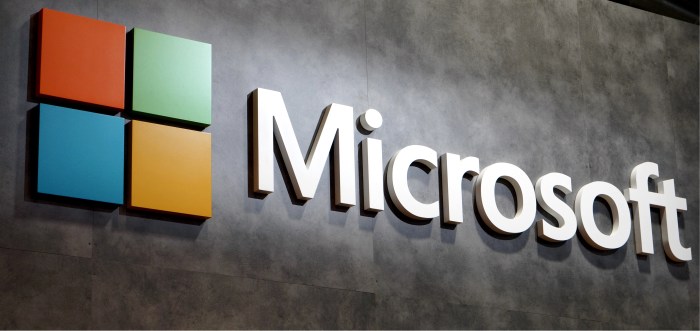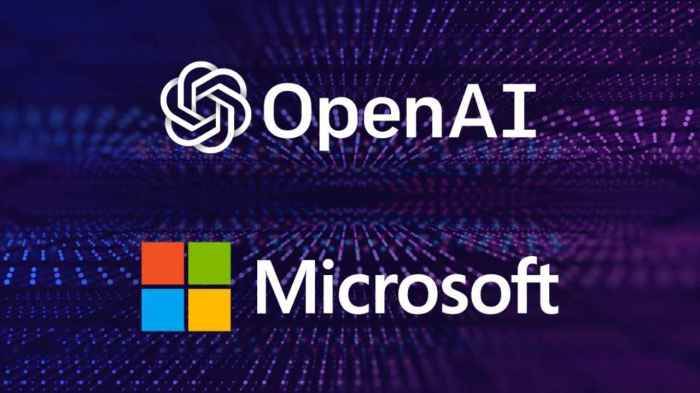Microsoft Now Has a Copilot for Almost Everything – it’s not just a catchy headline, it’s the reality of Microsoft’s latest push into the AI-powered future. From writing emails and documents in Microsoft Office to managing cloud infrastructure in Azure, Copilot is being integrated into almost every aspect of Microsoft’s ecosystem. This move signals a significant shift in how we work and interact with technology, blurring the lines between human and machine intelligence.
The expansion of Copilot reflects a larger trend in the tech world: the rise of AI-assisted workflows. These tools are designed to enhance productivity, automate tasks, and streamline processes, ultimately freeing up human resources for more strategic and creative endeavors. But the implications of this shift extend beyond the workplace, touching upon ethical considerations, potential job displacement, and the future of work itself.
Microsoft’s Copilot Expansion
Microsoft has been aggressively expanding its Copilot offerings across its product and service portfolio, embedding AI-powered assistance into nearly every facet of its ecosystem. This move reflects a strategic shift towards integrating AI as a core component of its business, aiming to enhance user experiences, boost productivity, and ultimately, solidify its position in the rapidly evolving technology landscape.
Copilot Integration in Microsoft Products
Copilot’s integration is not just about adding a new feature; it’s about fundamentally changing how users interact with Microsoft products. Here’s how Copilot is being implemented:
- Microsoft Office: Copilot is transforming Office applications, including Word, Excel, PowerPoint, and Outlook. In Word, it can help users generate content, summarize documents, and suggest edits. In Excel, it can automate data analysis and create visualizations. In PowerPoint, it can generate presentations and suggest visuals. And in Outlook, it can help users write emails, schedule meetings, and manage their inbox.
- Microsoft Azure: Copilot is also being integrated into Azure, Microsoft’s cloud computing platform. It helps developers write code, debug applications, and manage cloud infrastructure. Azure OpenAI Service provides access to powerful language models like GPT-3, enabling developers to build AI-powered applications.
- Windows: Copilot is making its way into Windows, the world’s most popular operating system. Microsoft is exploring ways to integrate Copilot into Windows to provide users with more personalized and intelligent experiences. For example, it could help users manage their files, navigate their computer, and access information more easily.
Impact of Copilot’s Expansion
The expansion of Copilot has significant implications for Microsoft’s strategy and competitive landscape:
- Enhanced User Experience: Copilot aims to make Microsoft products more intuitive and efficient. By automating tasks and providing intelligent assistance, it simplifies complex workflows and empowers users to focus on higher-level tasks.
- Increased Productivity: Copilot’s ability to automate tasks and provide insights can significantly boost productivity. It can help users complete work faster, reduce errors, and make better decisions.
- Competitive Advantage: Microsoft is positioning itself as a leader in AI-powered solutions. By integrating Copilot across its products, Microsoft aims to differentiate itself from competitors and attract users who value AI-powered experiences.
- New Revenue Streams: Copilot’s integration can create new revenue streams for Microsoft. For example, Microsoft could offer premium Copilot features as a subscription service or charge developers for access to advanced AI capabilities.
The Power of AI-Assisted Workflows: Microsoft Now Has A Copilot For Almost Everything
The integration of AI into our workflows is transforming the way we work, bringing about a new era of efficiency and productivity. AI-powered tools, such as Copilot, are revolutionizing various industries by automating tasks, streamlining processes, and providing valuable insights that enhance decision-making.
Automating Repetitive Tasks
Copilot can significantly reduce the time spent on tedious and repetitive tasks, allowing individuals and teams to focus on more strategic and creative endeavors. For example, Copilot can automate data entry, generate reports, and draft emails, freeing up valuable time for employees to focus on higher-value tasks. This automation not only improves efficiency but also reduces the risk of human error.
Streamlining Workflows
Copilot can help streamline workflows by providing intelligent suggestions and recommendations based on user data and past actions. For instance, Copilot can suggest relevant documents or contacts during email composition, ensuring that users have access to the right information at the right time. This ability to seamlessly integrate with existing workflows enhances productivity and collaboration.
Improving Decision-Making, Microsoft now has a copilot for almost everything
Copilot can analyze vast amounts of data and provide actionable insights that can inform better decision-making. By identifying patterns and trends, Copilot can help businesses make more informed decisions about product development, marketing strategies, and resource allocation. This data-driven approach empowers businesses to make better decisions and achieve better outcomes.
Revolutionizing Operations
The potential of AI-assisted workflows extends beyond individual tasks and processes. Copilot has the potential to revolutionize how individuals and businesses operate, enabling them to work smarter and achieve greater efficiency. For example, AI-powered chatbots can handle customer service inquiries, freeing up human agents to focus on more complex issues. This shift towards automation and intelligent assistance is transforming the workplace and empowering individuals to reach their full potential.
Ethical Considerations and Future Implications
The widespread adoption of Copilot, while promising increased efficiency and productivity, raises significant ethical concerns. The potential for bias, job displacement, and the impact on the future of work demand careful consideration.
Potential Biases and Discrimination
Copilot’s training data, derived from vast amounts of text and code, may contain inherent biases that could be reflected in its outputs. These biases could lead to discriminatory outcomes, reinforcing existing societal inequalities. For example, if the training data predominantly reflects male perspectives, Copilot’s generated text or code might perpetuate gender stereotypes. It is crucial to address these biases proactively through diverse training data and rigorous evaluation processes.
Job Displacement and the Future of Work
The automation capabilities of Copilot raise concerns about job displacement. As Copilot becomes more sophisticated, it could potentially automate tasks currently performed by human workers, leading to job losses in certain sectors. However, it’s important to recognize that Copilot is not intended to replace human workers entirely but rather to augment their capabilities. The future of work will likely involve a collaboration between humans and AI, where Copilot empowers individuals to focus on higher-level tasks requiring creativity, critical thinking, and human judgment.
Table: Benefits and Challenges of Copilot Adoption
The widespread adoption of Copilot presents both benefits and challenges. The following table Artikels some of the key considerations:
| Benefit | Challenge |
|———————————————|———————————————————|
| Increased efficiency and productivity | Potential job displacement and workforce restructuring |
| Enhanced creativity and innovation | Ethical concerns related to bias and discrimination |
| Improved access to information and knowledge | Dependence on AI and potential loss of critical thinking skills |
| Streamlined workflows and decision-making | Security risks and data privacy concerns |
User Experience and Adoption Challenges
The success of Microsoft Copilot hinges on its ability to seamlessly integrate into users’ workflows and provide a positive user experience. However, several factors can hinder adoption, including user familiarity with AI tools, potential for errors, and concerns about data privacy.
User Training and Support
Providing comprehensive user training and support is crucial for successful Copilot implementation. Users need to understand Copilot’s capabilities, limitations, and how to effectively utilize it. This can be achieved through:
- Interactive tutorials and demos
- Online documentation and FAQs
- Dedicated support channels
- In-person training sessions
By offering various resources, organizations can empower users to confidently leverage Copilot’s benefits and address any challenges they may encounter.
Overcoming User Resistance
Some users may resist adopting Copilot due to concerns about job security, perceived lack of control, or fear of errors. Strategies for overcoming this resistance include:
- Highlighting Copilot’s benefits: Emphasize how Copilot can augment human capabilities, improve efficiency, and free up time for more strategic tasks. For example, demonstrating how Copilot can automate repetitive tasks, generate creative content, or provide insights from data can help users see its value.
- Addressing concerns: Openly discuss user concerns and provide reassurance about job security, data privacy, and error management. Transparency and clear communication can build trust and encourage adoption.
- Phased implementation: Introduce Copilot gradually, starting with specific use cases or departments. This allows users to acclimate to the technology and provide feedback for continuous improvement.
- Incentivize adoption: Offer rewards or recognition for early adopters, encouraging them to share their experiences and advocate for Copilot within their teams.
As Copilot continues to evolve and expand its reach, it’s clear that the future of work will be significantly shaped by AI-powered tools. The key to navigating this transformation lies in understanding both the opportunities and challenges presented by Copilot. By embracing its potential while addressing its ethical implications, we can harness the power of AI to create a more efficient, productive, and equitable future for all.
Microsoft’s AI-powered copilot is making waves, automating everything from coding to writing emails. But what about the internet itself? Well, good news for all those digital nomads and content creators: the FCC has reinstated net neutrality , ensuring a level playing field for all online activities. With these two forces combined, the future of the internet looks brighter than ever, paving the way for even more innovative and accessible tools powered by AI.
 Standi Techno News
Standi Techno News

